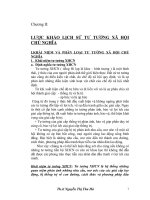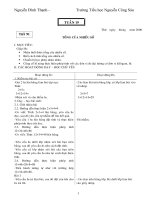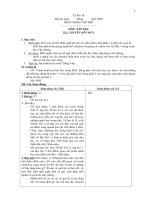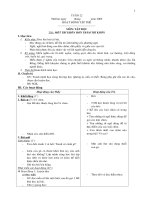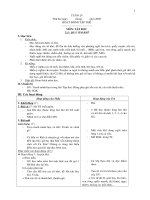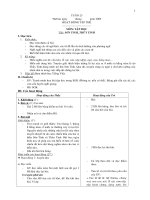Course - BDFT Semester - II Subject - Drafting & Pattern Making
Bạn đang xem bản rút gọn của tài liệu. Xem và tải ngay bản đầy đủ của tài liệu tại đây (964.01 KB, 28 trang )
Course- BDFT
Semester-II
Subject- Drafting &
pattern Making
Unit- III
Topic- pattern Making
Terms
Pattern Making
Pattern making is an art. It is the art of
manipulating and shaping a flat piece of fabric
to conform to one or more curves of the human
figure . Pattern making is a bridge function
between design and production. A sketch can be
turned into a garment via a pattern which
interprets the design in the form of the garment
components
pattern is the template from which the parts of
a garment are traced onto fabric before being cut
out and assembled. Patterns are usually made
of paper and are sometimes made of sturdier
materials like paperboard or cardboard if they need
to be more robust to withstand repeated use. The
process of making or cutting patterns is sometimes
condensed to the one-word Patternmaking but it
can also be written pattern making or pattern
cutting.
Methods of Pattern Making
Pattern making involves three methods-
Drafting
Draping
Flat paper patternmaking
Drafting
It involves measurements derived from sizing
systems or accurate measurements taken on a
person, dress or body form. Measurements for
chest, waist, hip and so on, and ease allowances
are marked on paper and construction lines are
drawn to complete the pattern. Drafting is used
to create basic, foundation or design patterns.
It involves the draping of a two dimensional piece of fabric around a
form, conforming to its shape, creating a three-dimensional fabric
pattern. This muslin is transferred to paper to be used as a final
pattern (Armstrong). Ease allowances for movement are added to
make the garment comfortable to wear. Advantage of draping is that
the designer can see the overall design effect of the finished garment
on the body form before the garment piece is cut and sewn.
However, it is more expensive and time consuming than flat pattern
making
: It involves the development of a fitted basic pattern
with comfort ease to fit a person or body form. Five basic
pattern pieces are used for women's clothing. They
include a snug-fitting bodice front and bodice back with
darts and a basic neckline, a sleeve and a fitted skirt front
and back with darts. However, as fashion changes
frequently women's styles fluctuate frequently
Fashion Pattern Making Term
1. First pattern- The first pattern is original
pattern developed for each design. This pattern
is generally made from Marking Paper & usually
requires fitting and adjustment, half a pattern is
developed. An asymmetrical design requires a
full pattern.
Image-1
Production Pattern- The production pattern is
a pattern set that has been corrected &
without error. The pattern must contain every
pattern piece. Required to complete the
garment. The pattern are used by the grader
for grading sizes and by the marker maker for
a fabric layout. A pattern chart is placed in
front of the set.
Image-2
Marker Maker- The Marker Maker’s
responsibility is to lay the production patterns
on marking paper so that there is little waste
of fabric. Pattern sizes are often mixed on the
marker to prevent waste. The marker is pencil
marked, photo marked, or done on a
computer.
Image=-3
Balance Line Term
Plumb Line- A vertical line that is at right angles with the
floor. Used to determine the balance of the figure.
Perpendicular line- A straight line at right angles to
another line.
Vertical Line- A line that is straight up & down.
Horizontal Line- A straight line parallel with the floor.
Right Angle- The 90 degree angle formed by two
intersecting lines, referred to as a squared line.
Symmetrical line- A center fine with equal
proportions on either side of it.
Balance- The perfect relationship between parts
that when combined, form a unit (or whole) in
which each part is in exact proportion and
harmony with all others.
Balancing a pattern- Finding and adjusting the
differences between joining patterns parts to
improve the hang and fit of the garment.
Horizontal Balance Line- A Reference to any line
marked around the form that is parallel with the
floor. Pattern are also marked with horizontal
balance lines squared from the center lines
representing the crosswise grain when the
garment is cut in fabric. The HBL lines help when
balancing the patterns.
Bust Point- A designated place on the bust and
pattern and referred to in flat patternmaking as the
pivotal Point or apex.
Image-4
Dart- A wedge shaped cut out in a pattern to
control the fit of a garment.
Dart Leg- The two lines converge at a
predetermined point on the pattern.
Dart & dart Leg
Image-5
Selvedge- is a self-finished edge of fabric.
The selvages keep the fabric from unraveling
or fraying. The selvages are a result of how
the fabric is created.
Image-6
Grain line. This thread runs the entire length of
the fabric and is parallel to the selvage. When
you place a pattern on the fabric, you align the
pattern’s grainline with the fabric’s lengthwise
grain. Unless otherwise noted, grain or grain line
generally refers to the lengthwise grain.
The line of fabric that moves at a right angle to
the crosswise grain is the lengthwise grain line.
Image-7
